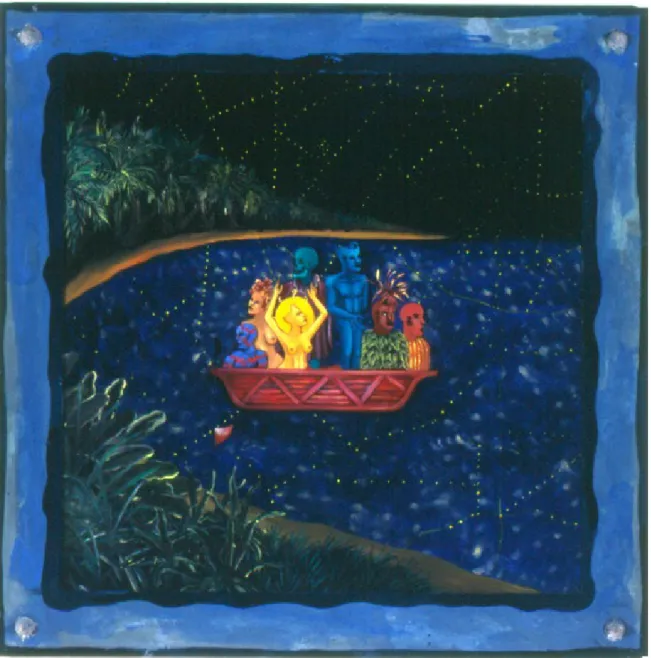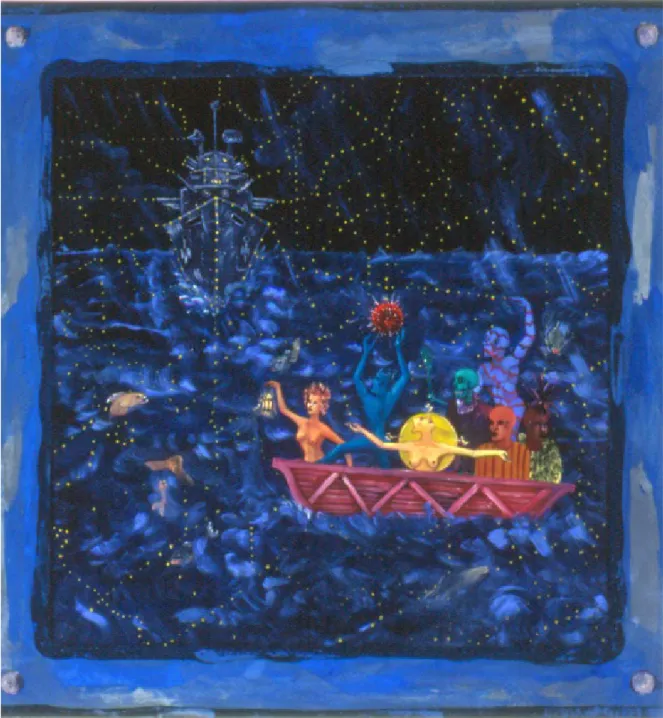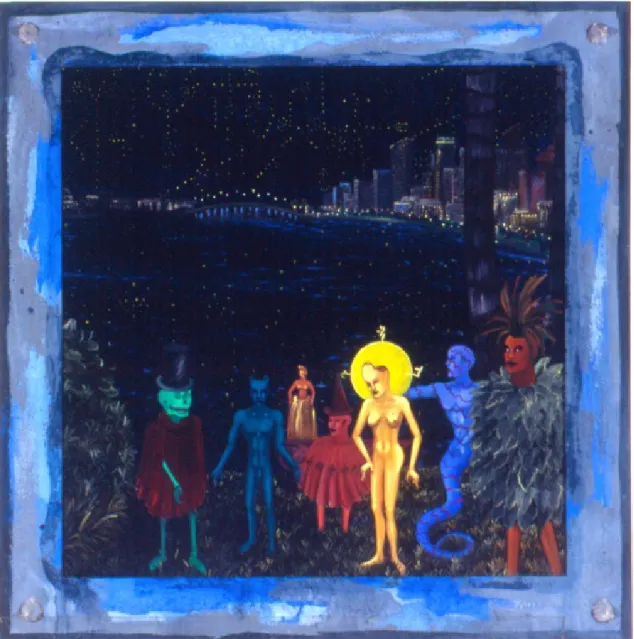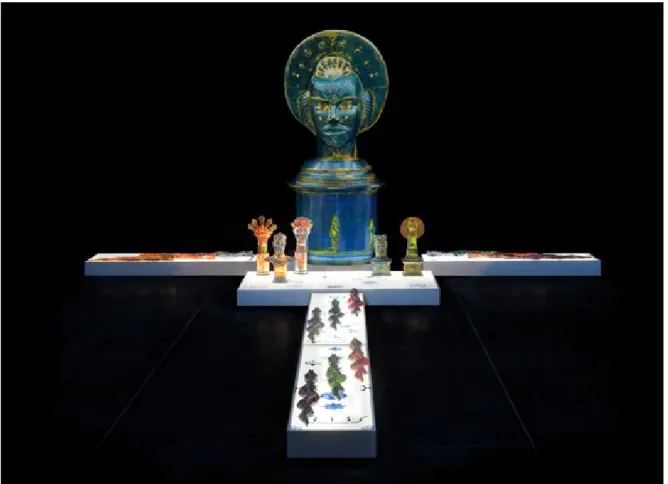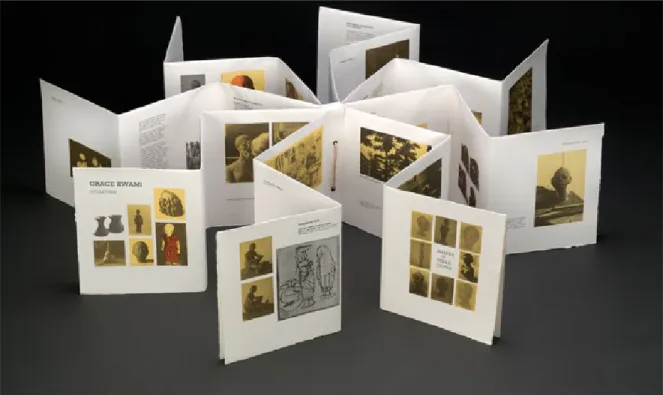Limitations and Adaptations of the Afro-Brazilian Museum at the Federal University of Bahia: Reflections. Marcelo da Cunha is professor of museology at the Federal University of Bahia (UFBA) and coordinator of MAFRO.
Returning to Africa
The Haitian Indigenist Movement
With the creation of the Center d'Art in 1944 and the triumph of naïve art in international artistic and cultural circles in 1946, the pictorial 'Haitian character' was redefined. Theorists who favored naive art saw it as a manifestation of the African soul that had guided the Haitian people throughout history.
Works Cited
Past, Present and Future: Mapping Vodun and the Art of Edouard Duval-Carrié
Introduction
Water was and still is a (if not the most important) medium of Vodun, "full of diasporic memory" (Sharpe 2020:15) and part of Vodun's geography. About the Door of no Return, visitors left the first part of the exhibition via a staircase to the Vodun in the African diasporas, including Haiti.
Vodou in Haiti: Making History
Duvalier co-founded Les Griots as a printed manifesto reminiscent of similar publications such as Présence Africain, and was involved in the founding of the Bureau National d'Ethnologie, a national institute of culture and art. For example, his violent secret police, tonton--makout, was literally named after "a bogeyman in a folktale." Their uniforms were partly made in the image of the Vodou spirit Zaka (Apter 2002: 245).
Here and there. Vodou and West Africa
The painting not only depicts the formal aspects of the genre, but also reveals the uncertainties and transformative powers of history and its archival construction by a man who, like the West African Vodun, is unfinished: “[…] it doesn’t seem to matter if someone is dead or alive. In addition to the above-mentioned terminological and substantive connections with the religious systems of the Yorùbá religion, Haitian Vodou appears to be heavily based on legal systems and is therefore very connected to everyday reality. The term lwa is probably based on the French (loi) and the Kreyòl word for law (lwa).
Visual Jazz? Voodoo in Hildesheim
Above Duval-Carrié's altar, the title of the exhibition is written in blue cold flames. Among the many Vodun objects, only a few works of art were displayed in this part of the exhibition.
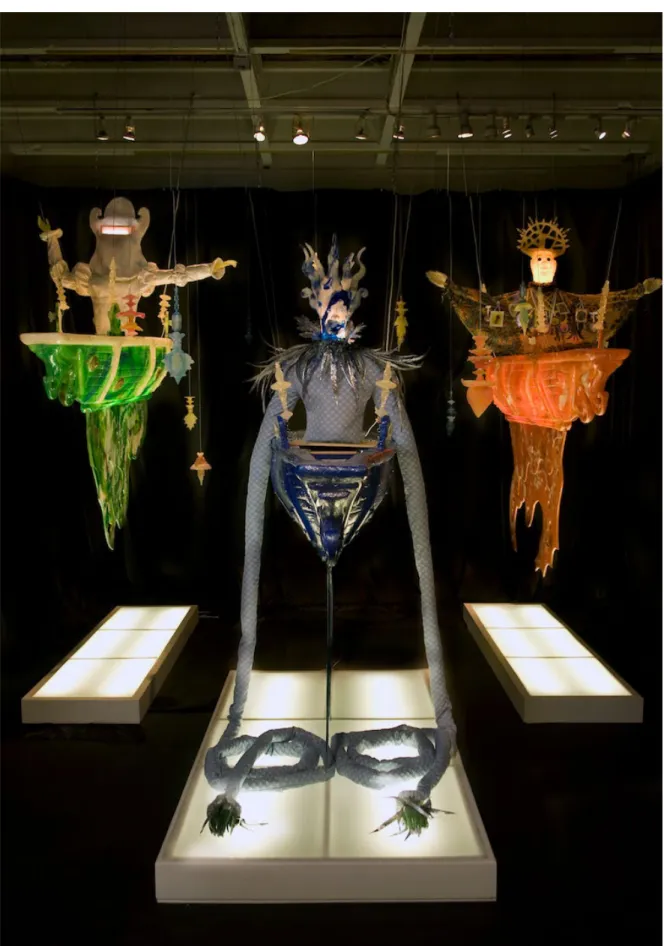
Conclusion
Bogues, Anthony, “Making History and the Work of Memory in the Art of Édouard Duval-Carrié”, Edouard Duval-Carrié. Gutiérrez, Jorge Luis, "Édouard Duval-Carrié: Epifanie van Haïti, die Karibiese Eilande en die Trope", in Gutiérrez, Jorge Luis; López Sacha, Francisco (red.), Edouard Duval-Carrié.
Digging as if to find the source of all doubt”
South Africa did not cooperate with UN demands for a plan for Namibian independence, and instead persecuted members of SWAPO (South West African Peoples Organization). It also meant raising awareness of the role played by Umkhonto we Sizwe (see below).
Memórias Íntimas Marcas
One sensitive detail is the fact that the civil war had not ended at the time of the project. On the importance of the official personalities who act as patrons for the project, see Nadine Siegert, 174-175.
Emerging out of a Tunnel
The question of the visual language of trauma is one of the main questions that is repeatedly raised within the problematics of representation. However, the possibility of active personal involvement is still questionable – a representation cannot be considered a particularly suitable vehicle that unfailingly results in sincere empathy on behalf of the spectator.34.
Passing by
This means that for the South African soldiers, those concerned by the listener program Forces Favorites, the war is in the past, but not for the inhabitants of the region. History must be constructed within this ceaseless counter-motive of the anachronistic point of view.
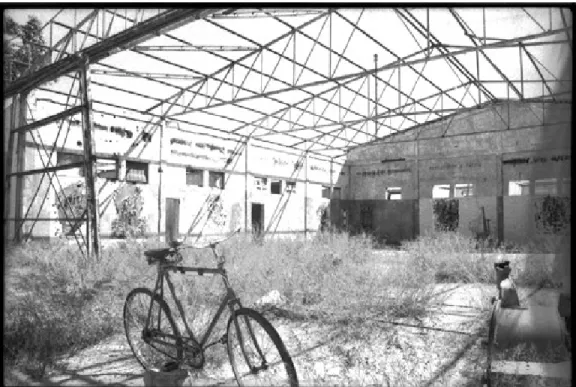
Digging into
The fact that memory is carried by sound in Younge's work creates a gap between lived actions here and now and experience of actions nine years earlier or elsewhere, later. Thus, the action of "interrogating the Earth" carries with it an aspect of razor-sharp and vital danger.
Un-hearing
Due to the unresolved war trauma suffered by most of the men who fought in the Angolan conflicts, the normalization of violence is paramount and the abuse of women is rife in this community. Two Pomfret-born artists from families who moved here because of the Angolan conflicts have taken on the challenge of making the stories of this community heard.
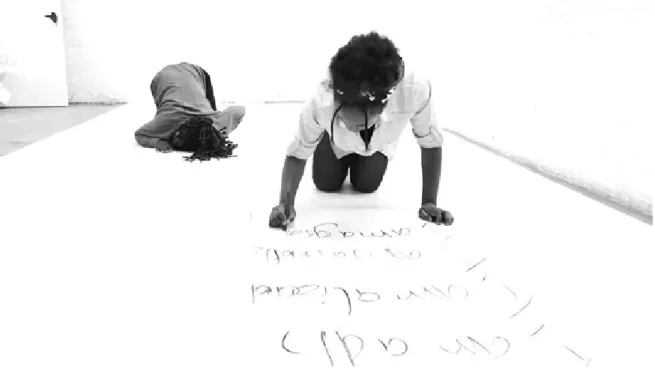
Un-earthing
Firmino and Uambembe go to great lengths to create a respectful reception of the narratives they share and to cater for the sensibilities of the prospective viewer/. Again: The voices in Garaicoa's video do not agree with the speechless portraits presented by the image; the radio program in Younge's work speaks of sound broadcast over great distances in terms of time and space, the voices of the inhabitants pronouncing names of birds no longer found in the region.
Acknowledgements
Bunn, David, "Toughts on a Phantom Limb: Gavin Younge's Distant Catastrophes", in Prosthesis: Kunswerke deur Gavin Younge-die dekade 1997-2007. Njami, Simon, "Fernando Alvim, Psychoanalysis of the World", in Laurie Ann Farrell (red.), Looking Both Ways, Art of the Contemporary African Diaspora.
The Black Atlantic Enters the Thinking Space between the Pages: Three Books
The pages that the artist prepares for each new collage – in the same dimension and the juxtaposition of writing, collage of photographs, magazine clippings and other graphic and visual elements – make Lambeaux an imaginary book or notebook that never existed as such, but presents itself as an (infinitely unfinished) unitary object in the effect of the individual pages. This paper will take up only some of these elements in order to deepen the contours of the interplay between book culture, memory, art and the recollection of, and historiography in, the Black Atlantic.
In Dialogue with Historical Models
In this case, the format of the pages and the title as a diary clarify the relationship of the pages to each other, and again use the idea of turning the page to facilitate immersion beyond the current exhibition and towards future pages. The reading of these works of art cannot be simplified, as these three examples will show: the artists reflect on different elements of the thinking space (Aby Warburg's . "Denkraum") produced by the book, elements that are as numerous as book cultures in the time and geography, as diverse as interactions with books and writing.
Bundith Phunsombatlert
The work of Anna Atkins emerged in the context of the broad enthusiasm for natural history in Great Britain in the 19th century (Schaaf 2018). John George Children, Anna Atkins' father, was a recognized scientist and active member of the Royal Society (Schaaf 2018: 41).
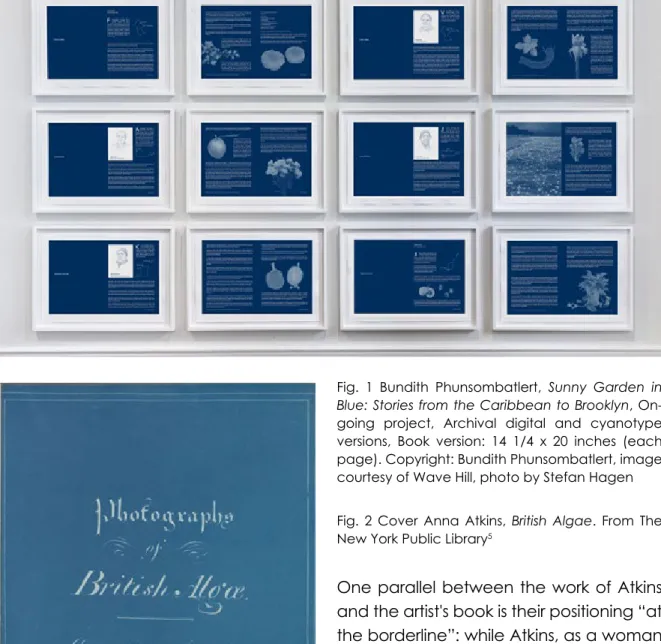
Absences in the archive,
10 The technical re-enactment of the cyanotype was indeed part of the artistic project, but not directly included in the book. This could be an important question for questioning the role of the European literary tradition here.
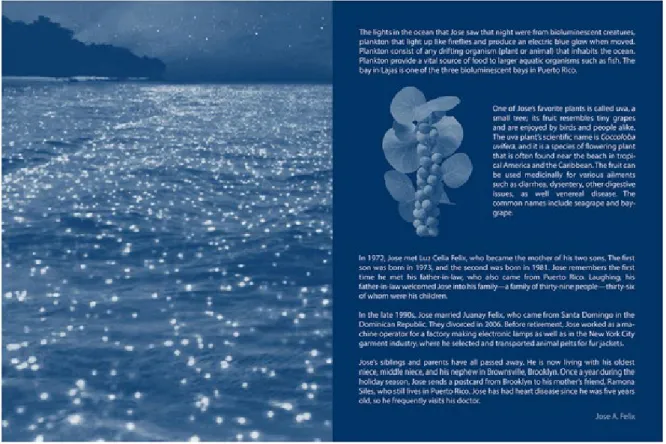
Natural histories of the Caribbean
The use of Caribbean flora as anchors of these memories shows the dark side of collecting botanical knowledge in the colonial context. At the same time, it opens up the field of thinking about the flora of the Caribbean and its role for people as a space of identity creation.
From Feeling to Touching,
The idea of objectivity implicit in Anna Atkins' cyanotype illustrations, in their pursuit of scientific knowledge-gathering, is reflected in Phunsombatlert's work by the individualization through biographies and personal recollections. In his adaptation of the botanical theme of British Algae in his Sunny Gardens, the artist not only expands Atkins' photographic collection to include the subject of immigration.
This presentation shows a playful relationship between the title and presentation of the book: the title Grace Kwami Sculpture refers both to the sculptures of Grace Kwami and to the quality of the book as a sculpture.16. In 1953, she graduated from Kumasi College of Arts (later Kumasi College of Technology), where artistic training in pottery and terracotta was part of the education of artists and teachers, along with weaving and textile arts (Kwami.
Artist and art historian
With this book, Atta Kwami explores the artistic activity of his mother, Grace Salome Kwami. Grace Kwami belonged to the first generation of internationally active Ghanaian artists, as Atta Kwami tells from his own childhood memories, in which his mother's artistic work and life were closely connected (Kwami.
The Making of the Book,
The Making of Art and Knowledge
But the making is also an important part of the insight into the mother's work. Her hands are shown here handling terracotta, documenting not only her gestures but also her handling of the material.
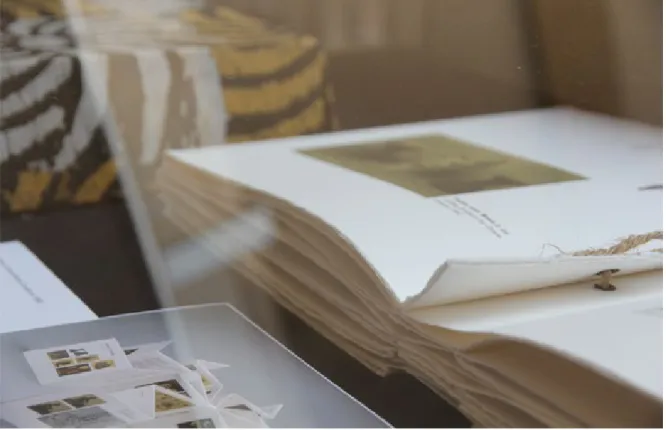
Endless Diary, Endless Stories: Gilles Elie dit Cosaque
The viewer becomes part of the artistic process by completing the reading of these “images de pensées” [thinking pictures]. Cosaque materializes memories and at the same time tells endless stories - following the traces of the past.

Bibliography
The Writers of the West Indies Diaspora and Their Role in the Future of the Caribbean”, in Kathleen Gyssels, Bénédicte Ledent (ed.), The Caribbean Writer as Warrior of the Imaginary/ L'Écrivain caribéen, guerrier de l'imaginaire . Wasserman, Krystyna, Johanna Drucker, Audrey Niffenegger (eds.), The Book as Art: Artists' Books from the National Museum of Women in the Arts.
A Plea for a History of Black Atlantic Visual Arts
Everlyn Nicodemus (2009) argues that the Black Atlantic also brought about a change in 20th century African art. It is not the "traces of homogeneity" evoked by Jules-Rosette that support the case for a history of the Black Atlantic, even in a virtual state.
Deframing
The same debate later took place in other regions of the Black Atlantic. He begins with the ideas of "memory and self-observation" (Europe invented organized collective memory - public libraries, museums, national archives - and technologies of visual recording - photography and film. The thesis seems to me attractive but dubious: they are probably even more technologies of production and control of others).
A Shortlist of the Challenges
The periodization of (American) colonial spaces must be examined in conjunction with the history of African art and the history of art in the colonizing countries. The presence of Afro-descendants in the history of countries with a large African diaspora serves as an example.
Common Threads of Visual Practices
On the American side of the Atlantic, and in the United States in particular, artists not only came up against an artistic apartheid, but also sometimes felt isolated from "their" (black) audiences; or were tasked with using abstract or non-narrative visual language.18 An aesthetic that aims to reflect the cultural identity of a particular community can prove to be a straitjacket for artists when it dictates the formal path to be followed in the name . of fusion between the artist and the community. When it comes to the last decades of the 20th century and the beginning of the 21st century, it will be necessary to explore the extent to which the arts of the Black Atlantic coincide with the common formal languages.
A Tentative Timescale
It should be pointed out that many of the black artists who rose to prominence in the 1950s and 1960s were self-taught.20. One of the forerunners was Abdias do Nascimento, who founded the Museu de Arte Negra in Brazil in the 1970s.
The Spirit of the Approach
At the conference 'Reshaping the Field: Arts of the African Diaspora on Display', organized in November 2021 by Nana Adusei-Poku, participants rejected essentialist approaches to visual arts in the African diaspora. Harris, Wilson, "History, Fable, and Myth in the Caribbean and Guineas," in The Unfinished Genesis of the Imagination.
Recomposing the Fragments. Motifs of Diaspora in the Work of Guido Llinás (Cuba 1923 – Paris 2005)
Paulo Nazareth
A Craque in the Mid-field
Em imagens fotográficas como as da série Qual é a cor da minha pele? Kiki Mazzucchelli “Sobre marfins, dentes e ossos: uma breve introdução à obra de Paulo Nazareth”, in Paulo Nazareth.
Joe Ouakam
The expression of the body in Joe Ouakam's work was a way of reminding us of the present. In the neighborhood, many of the people who painted the walls are neither professional painters nor decorators.
Re-membering the Mammy in Betye Saar’s Works
Stereotyping Black Women as Aunt Jemima/
Mammy/ Domestic Help
Saar's invention of the gun-toting Aunt Jemima in her iconic work The Liberation of Aunt Jemima (1972) inspired later black women artists such as Renee Cox. Saar resumed work on the Aunt Jemima stereotype in 1998 and 2000 with her two exhibitions, Workers + Warriors: The Return of Aunt Jemima (1998) and In Service: A Version of Survival (2000).
The Advent of the Gun-toting Mammy
Saar's presentation of Aunt Jemima matches Harris' definition of the characteristics of the Militant Mummy. Like Saar's use of the black fist, Cox makes her political point explicit by foregrounding Rajé's braids and the colors of black nationalism in her version of Aunt Jemima's liberation.
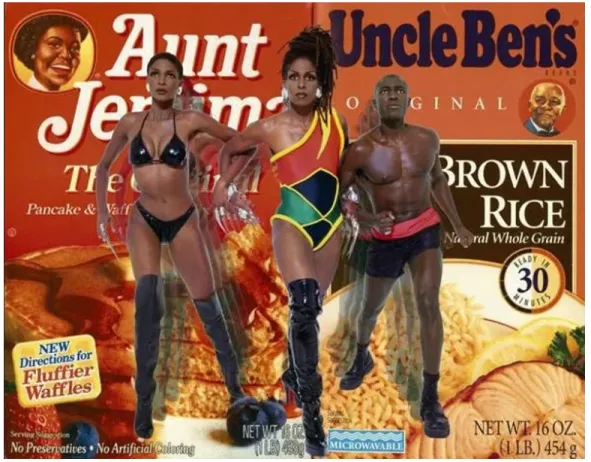
Saar’s Return to the “Unfinished Business of Aunt Jemima”
Moreover, this new model appears to be more threatening because, unlike the Mommy/Aunt Jemima stereotypes created by the white heteropatriarchal capitalist order, the model of the black lady comes from within the black community—the black bourgeoisie itself. Although they break free of one type of stereotype (characterized by pancake ads), Cox prompts the viewer to question whether they have achieved liberation in this age of cultural commodification of black bodies.
Black Women’s Palimpsest
The second quote, "Extreme times, call for extreme heroines", is embossed on the bottom end of the washboard. The image of the revolving Mammy combined with the slogan "Free Aunt Jemima" recurs in several works.
From Outward Militancy to Covert Subversion
Contrary to Saar's representation, Toni Morrison's The Bluest Eye (1970)26 and popular advertisements featuring the stereotypical Mammy show that only whites are the consumers of the exquisite dishes prepared by black women. Lefalle-Collins, Lizzetta, “Surviving Servitude”, in Betye Saar: In Service: A Version of the Survival.
Necessary Abstractions, Or, How to Look at Art as a Black Feminist 1
In this essay, I consider the art-historical implications of a methodological cen- tering of black women in the making of the modern world, particularly for our
Over the past 20 years, those of us working in North America and Western Europe have witnessed an explosion of market, exhibition and critical interest in modes of black abstraction such as Pindell's that emerged in the 1960s and 1970s. Although these interventions were instrumental in raising the profiles of black abstract artists, they tended to — like Jones's title.
Answering such questions is, in fact, the ostensible aim of critic Darby English’s 1971
Recently, Whitney Museum curator Adrienne Edwards has done important work to address this issue by exploring the relationship between chromatic and racial blackness in twentieth-century abstraction by artists on all sides of the color line (Edwards 2016). With this mapping of the discursive terrain in view, we have now reached the heart of the matter: What would it mean to develop a black feminist materialist approach to.
With this mapping of the discursive terrain in view, we have now arrived at the heart of the matter: what would it mean to develop a black feminist materialist approach to
Moten Fred, "Object Resistance: The Theatricality of Adrian Piper," In the Break: The Aesthetics of the Black Radical Tradition. Pindell, Howardena, "The Aesthetics of Texture in African Ornament," in The Heart of the Question: The Writings and Paintings of Howardena Pindell.
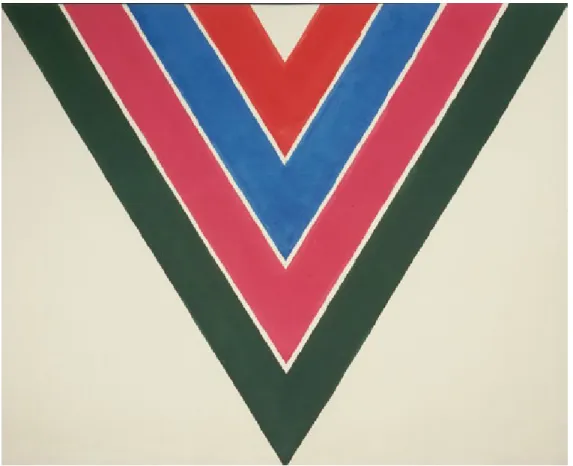
Racial Indeterminacy and Afro-Latin American Art: The Case of Antonio Argudín Chon
However, despite the undefined nature of Argudín Chon's racial background, this article affirms the value of his life and output in the field of Afro-Latin American arts for several reasons. More importantly, drawing attention to and trying to determine Argudín Chon's racial identification leads us to one of the most difficult puzzles of the field.
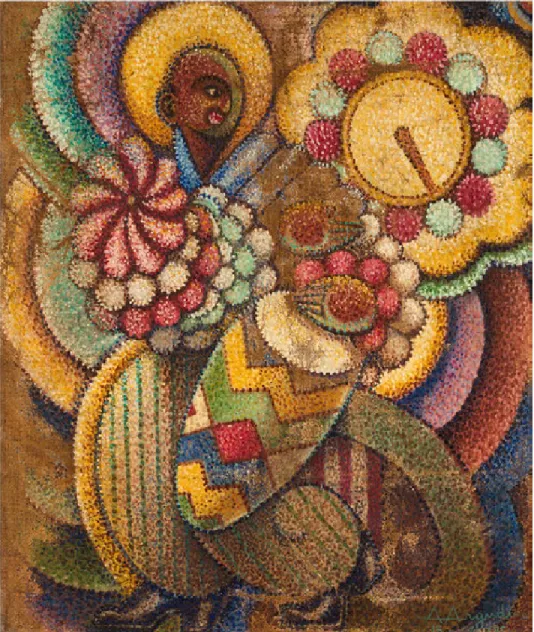
Antonio Argudín Chon’s Life and Work: What the Archives Provide
The Catalogues
While Argudín Chon was involved in various art organizations, the institution he was closest to was the CBA. Therefore, it is possible that Argudín Chon's close alliance with the CBA may have been partly related to the somewhat inclusive multiracial environment of the institution.
The Paintings
The CBA was a multiracial venue that housed the majority of Afro-Cuban artists of the period. As if questioning the strong exclusionary gender dimensions of the ideology that left women out.
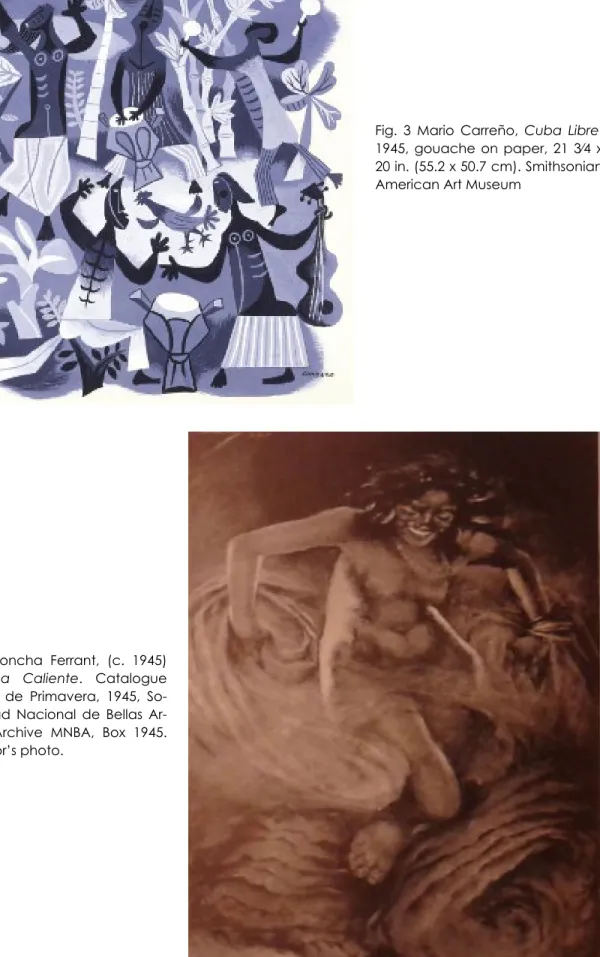
Art and Acceptability
Some Problems of Visualising Caribbean Slavery through Modernism
Yet it is perhaps, rather than in spite of, this outcome that these two works of art are so revealing of the circumstances surrounding decolonization and post-independence Guyana. Bringing these artworks together for discussion can show what can emerge when artists in the Caribbean turn to the theme of the region's past of plantation slavery and the theme of anti-colonial resistance.3 The history of Williams and Moore's attention to slavery. , indeed shows how Guyana has looked back on its past from a number of points of view.
Problematising Art's Commemorative Efficacy
The terms in which he did so are complex and specific to the cultural geography of the Caribbean and its intellectuals in the diaspora. Williams covered them in his essay "The Embarrassment of the Artist in the Caribbean." 1968), a meditation on the departures from painting and the push towards abstraction.
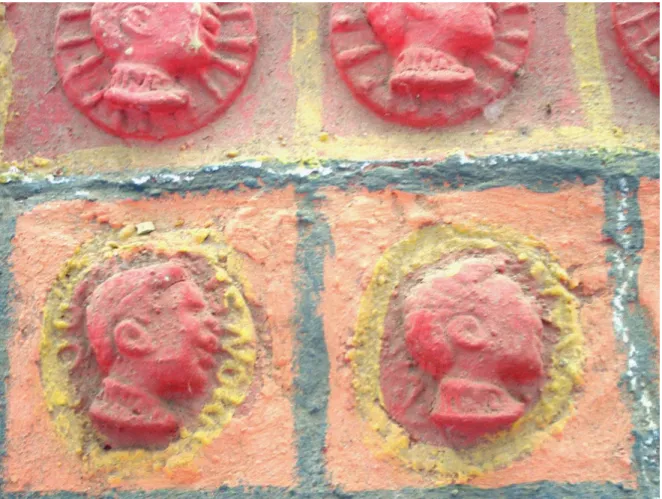
Conflict and Visualisation
Inaccuracies in the figure drawing were evident in the rendering of the small group, including the wounded and dead, to the right below the raised knife arm of the slave. Of the two main ethnic groups among the rebels, his background stood out from his officers, Accara, Atta, Fortuyn and Prins.
Art as an Unreliable Medium
Aubrey Williams was engaged in painting in light of the emergence of more public and also temporary types of creativity, such as sculptural production on the one hand, theatrical performance on the other. The events of 1763 in Berbice, recalled in the twentieth century, were in no small measure a pretext for trying to understand the creative possibilities as well as the limitations of art and figuration.
Racial Specificity in Brazil
These policies were then discontinued in 2016 following the impeachment of Dilma Roussef and the dissolution of the Ministry of Racial Equality. Faced with such condemnation, Brazilian scientists adopted the hygienic trends in vogue at the time and identified "whitening" of the population as a viable one.
The Influence of Biological Determinism: From the
The historical scope of this essay extends to 2001 and the Durban World Conference against Racism in South Africa, which was a milestone for the black movement in Brazil as it resulted in the long-awaited adoption of government policies in favor of Afro-Brazilians. In response to this denial of a truly mixed Brazil, Gilberto Freyre turned this ideology on its head and declared the birth of a new "race": the Brazilian race, a product of the biological and, above all, cultural mixing of the three founding components of the Brazilian nation: white, black and Indian.
Degeneration” of Racial Mixing to Whitening
This "whitening" ideology was introduced by the Brazilian elite towards the end of the 19th century. To challenge the dominant readings, some of the Black activists in the 1940s interpreted the idea of racial mixing as blackening the population instead of whitening it.
The Myth of Racial Democracy: Rationale, Reality and Challenges
Their demand for real competition, in the sense of the liberal capitalist ideology, which was supposed to guarantee "equal opportunities" and. From the filing of the complaint to the police investigation and the judge's decision, there is prejudice against blacks.
The UNESCO Project and the Unexpected
The results of the questionnaire showed that 97% of respondents said they were not prejudiced, but 98% of the same sample said they knew someone who was prejudiced, which could include friends or family. Despite the fact that Law 7,716, which came into effect in January 1989, criminalizes racism, the police continue to treat racist comments as "jokes". Carlos Moura, executive secretary of the Interministerial Task Force on the Recognition of the Black Population, stated in 1998: “This is not a flaw in the law.
Revelation” of Brazilian Racism
The São Paulo team, which later became known as the Escola Paulista, completely changed the approach to the race issue raised at the beginning of the century. Like Florestan Fernandes or Oracy Nogueira, however, Roger Bastide never rejected one of the central elements of Gilberto Freyre's thought: the warmth and cordiality of interpersonal relations in Brazil.
Brazilian-style” Racism: Skin Color as a Factor in Racial and Social Hierarchy
Embora as autoridades e a elite brasileira defendam um “branqueamento” da população brasileira ao longo do tempo, isso não seria na verdade um “escurecimento”. Fernandes, Florestan, "O Teatro Negro", in O Estado De São Paulo reeditado em Abdias do Nascimento (ed.), Teatro Experimental do Negro: Testemunhos.
Constraints and Adaptations
Project and Inaugural Exhibition 1
The president of the Bahia Institute of Medical History (Instituto Bahiano de História da Medicina, in Portuguese), Mr. More than a thousand pieces reserved for the installation of the Afro-Brazilian Museum are deteriorating.
Museographic Project for the Initial Module
